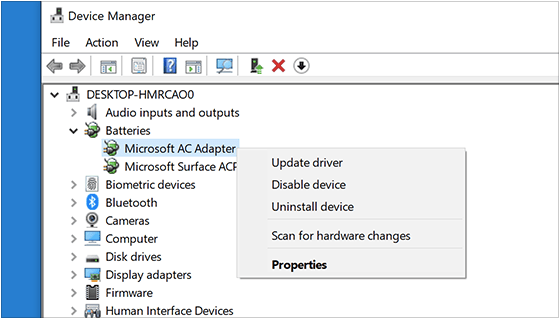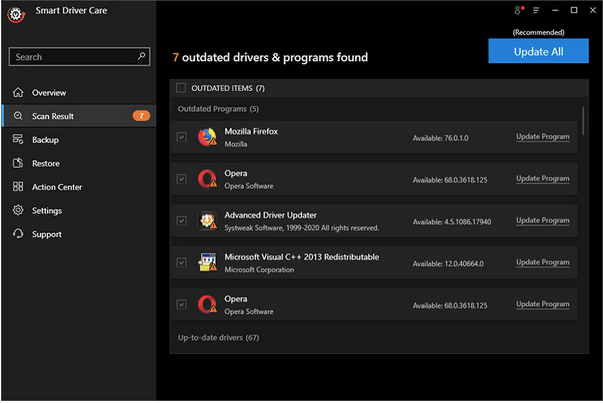Stuck with external hard disk error on Windows 10? Are you unable to access the disk drive and its stored data? You can afford to lose all the files and data stored on the external hard drive, right?
Don’t worry! By following a bunch of workarounds, you can quickly fix this error on your device through simple troubleshooting steps.
In this post, we have covered a few solutions that will allow you to fix the I/O device error on Windows 10 PC. But before we proceed, let’s understand the possible causes of why you may encounter this issue on your device.
Most Common Causes Why I/O Device Error Occurs:
- Missing/outdated drivers.
- Physical damage on the hard disk.
- Fault or corrupt hard drive.
- Compatibility issues.
- Incorrect Drive transfer mode.
What is I/O Device Error?

The external hard disk error is also referred to as I/O (Input/Output) device error as your system is unable to read the disk contents due to the occurrence of this issue. This error can occur on almost any kind of external hard drive be it portable disk, USB flash drive, or SD card. When you encounter the external hard disk error, you won’t be able to access the drive’s data, and the system will process none of your requests.
Also Read: How to Fix Hard Disk Errors on Windows 10.
How to Fix External Hard Disk Error?
Here are a few possible set of solutions to resolve external hard drive error on Windows 10 machine.
Solution #1: Update Device Drivers
One of the most common reasons why you may experience the I/O device error can be due to missing or outdated device drivers. By updating or reinstalling the drivers, you can efficiently resolve this issue. Follow these steps to update drivers on Windows 10:
Right-click on the taskbar and select “Device Manager”.
In the Device Manager window, look for all outdated drivers indicated with a yellow-colored “i” icon.
Right-click on the driver’s name and select “Update Driver” option from the context menu.

Follow the on-screen instructions to update all outdated device drivers on your system.
Sounds like too much hard work? Rather than manually updating all the drivers, you can install the Smart Driver Care utility tool for Windows. Smart Driver Care automatically scans your Windows PC to find missing, corrupt, or outdated drivers and updates them in just one click. It is one of the best driver updater tool for Windows that will save you from the manual hassle of updating drivers from time to time basis.

Download today!
Solution #2: Change the Drive Transfer Mode
Another possible reason why I/O device error may have occurred on your device is due to incompatible device transfer mode between your system and the external disk drive. You can update this drive mode via IDE channel properties. Here’s what you need to do:
Launch the Start menu search and type “Computer Management” in the text box. Hit Enter.

Select the “Device Manager” option from the left sidebar. Once you’ve selected the Device manager option, look for the IDE/ATA ATAPI Controller option on the right side of the window. Double click on it to expand the options.

Right-click on the “Standard SATA AHCI Controller” option and select “Properties”.

Select the “PIO Only” option in the transfer mode box. Tap on OK to save changes and then close all windows to check whether it resolved the issue.
Also, keep in mind, don’t change the settings for “Primary IDE Channel, Device 0” because this is your main system disk on which Windows is stored. Making any alterations on this disk might mess with your system’s performance.
Solution #3: Use CHKDSK Tool in Command Prompt
Windows Check Disk Utility tool is a great way to fix any kind of hard disk related issues on Windows 10. To use this tool, follow these steps:
Launch the Command Prompt shell.
Type “CHKDSK <Drive Letter name> : /f/r/x/” and then hit Enter.
For example, say if E: is your external disk’s title then you can write the command as:
CHKDSK e:/f/r/x

Wait for a few minutes until Windows runs a complete check on your device to look scan and fix hard disk related issues on your device.
Also Read: How To Resolve “Disk Read Error Occurred” In Windows 10?
Here were the three most effective solutions to resolve I/O device error on Windows 10. You can take the help of any of the above-mentioned methods to overcome the issue and start using your external hard disk and access its contents.
Good luck!



 Subscribe Now & Never Miss The Latest Tech Updates!
Subscribe Now & Never Miss The Latest Tech Updates!
Donna
So for the CHKDSK option, do you type chkdsk e: f/ r/ x/ OR chkdsk e: /f /r /x The slashes before or after the f, r, and x?